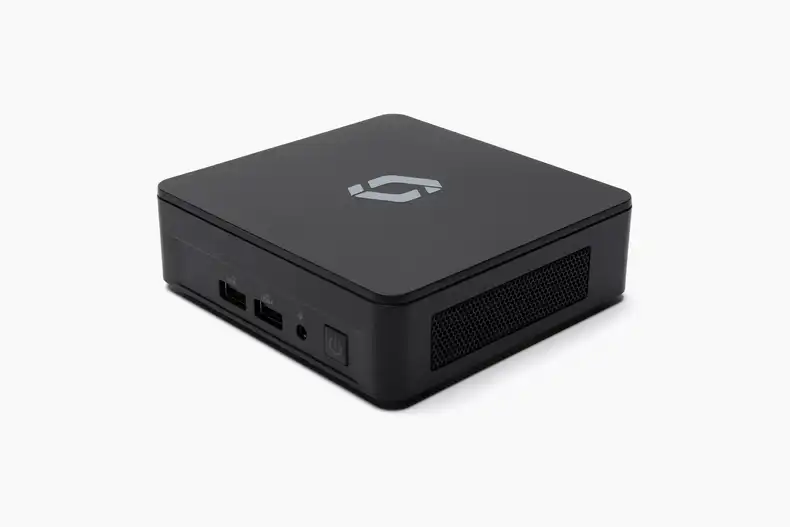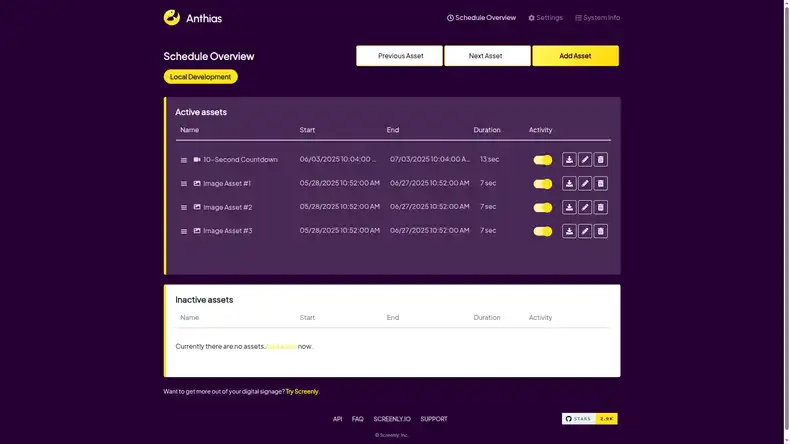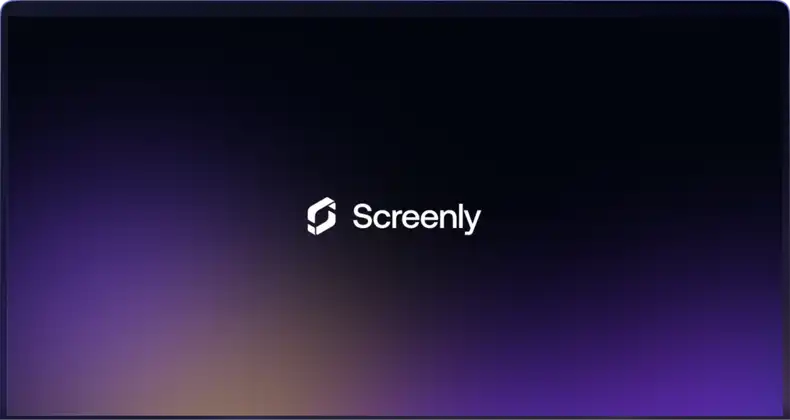Of course, you have seen massive billboards on the side of the road. They catch your eye, and they get the message across in just a few words. They are everywhere too, and that is because they are a proven marketing channel that works. However, in recent years, marketing and advertising agencies have started using much smaller digital signs to display their clients’ messaging and promotions. In this post, we walk you through how your agency can offer digital signs as an advertising medium. By the end of this article, you’ll know how to launch your very own digital signage advertising network.
What is a digital signage advertising network?
A digital signage advertising network is a collection of digital signs that display image, video, and motion-graphic advertising content to a given audience. These digital signs are typically found in lobbies, waiting rooms, and other public spaces such as libraries and bus stops. The ideal location for a digital advertising sign is a place where there is heavy foot traffic and a reason for people to slow down. When people have a short pause in their route, they have a chance to observe your digital advertising sign.
Display screens for digital signage advertising networks are typically the size of a large TV - say around 40 to 65 inches when measured diagonally. Larger digital advertising screens certainly do exist. However, these larger sizes are less common. The takeaway here is that these screens are much smaller than the typical billboard on the side of the road. This smaller size allows companies to display their messaging indoors and in more crowded areas than they were able to previously.
Marketing and advertising agencies now operate fleets of these digital advertising signs across cities and sell display time on these screens to advertisers. The agency takes care of managing the screens and deploying the advertising content. All the companies that are advertising have to do is pay their monthly advertising fee. Once your agency pays for the initial startup costs, a digital signage advertising network can be a profitable revenue stream.
What do I need in terms of digital signage advertising software and hardware?
If you are going to launch a digital signage advertising network, you need to invest in hardware and software that will make screen management as easy as possible. Managing remote devices is a difficult undertaking for any team. Remote device management is even more difficult when you have client contracts to fulfill and expectations to meet. To launch a smoothly operating digital signage advertising network, you need digital signage hardware and software that is intuitive, secure, and reliable. Nobody wants to get a late-night call from a client who is upset that the agency’s digital advertising screens are down.
To get started, you first need to select digital signage advertising software. This software will help you manage your screens and schedule your clients’ advertising content. You need to look for software that is both easy to use and robust enough to work well across many different scenarios and digital signage use cases.
In terms of features, make sure that your selected digital signage advertising software allows you to manage the content of your digital signage advertising screens remotely. This feature is essential, as, without it, an employee of the agency will have to visit each screen in person and update the content manually with a USB drive.
Secondly, make sure that you can set advertising content to play for a set duration at predetermined times. This feature is key, as your clients pay your agency for this display time. You need to make sure that you have the necessary technology to fulfill these contract requirements.
Lastly, be sure that your digital signage advertising software allows you to check your screens’ playback statuses remotely. You need to know if any of your screens are down or experiencing playback issues. This feature will enable you to tackle any problems with your displays immediately so that you can provide maximum screen uptime for your clients.
You will also need a digital signage player. This device is a media player that runs your digital signage advertising software and pushes your advertising content to the display screen. You’ll need one digital signage player for each display screen in your advertising network.
When choosing your digital signage player, make sure that you do not select one with unnecessary processing power. Purchasing a digital signage player that has more processing power than you need will result in unnecessary expenses. In addition to high initial hardware expenses, you will also have unnecessarily high electricity expenses for your digital signage player. As your digital signage advertising network will have multiple display screens, it is essential to pay close attention to your costs. What seems like a small expense for one screen can quickly add up when you multiply this cost by the total number of screens in your deployment.
Also, make sure that the operating system and software for your digital signage player are secure. Bad actors can easily hack remote digital advertising signs that are out of sight from your agency’s employees. Hackers can force your screens to display embarrassing content or use your screens as a backdoor to access sensitive business data.
What are the benefits of digital signage advertising?
A digital advertising sign is a unique advertising channel with unique advantages. Digital signage advertising’s primary benefit is that your agency can serve eye-catching and dynamic content to your clients’ potential customers. Given the size and portability of digital signs, your agency can serve this content to your clients’ potential customers in a wide variety of locations. Other advantages include the ability to change content quickly and expand the network’s size easily. Another benefit is the ability to hookup custom software applications to your digital advertising signs via API. Read more on each of these additional advantages below.
One of the most important advantages of a digital advertising sign is that an agency can quickly change the displayed advertising content. Billboards, static signs, or other print media such as brochures or direct mailings do not share this important advantage. Once an agency prints content on those mediums, the only way to change the content is to print new content. With digital signage, an agency can change advertising content in just a few clicks.
With the ability to quickly and easily change-out content, marketing and advertising agencies can offer added flexibility to their clients. If a client wants to change their ad copy and creative, an agency can make these changes the same day that the client makes the request. If your agency and a client need to part ways, you can get a new client’s advertising content up and running quickly.
Another benefit of digital signage advertising is that agencies can quickly scale their digital sign deployment. With the right digital signage advertising software, agencies can add a new screen to their network in minutes. The agency can then direct this screen to show new, original advertising content or the same advertising content as other screens. This benefit is important, as, once an agency’s digital advertising network begins to gain traction in the community, the agency will not be held back by hardware or software limitations.
For the more tech-savvy agencies, another significant benefit is that users can hook up digital signage advertising networks to databases and software tools. An agency can make this connection via a digital signage API. This feature enables agencies to build custom software for their digital signage advertising network. For example, agencies can develop a custom web interface that allows clients to design advertising content themselves and upload it to the agency’s servers. Via a digital signage API, users can push content to the agency’s screens in real-time.
Some tips for the business side of digital signage advertising
As an agency, you need to master both the technology and business of digital signage advertising. You need the technology to work, and you also need the economics of the technology to work to stay profitable and keep your business running. Below are some useful tips.
First, be sure to offer a design-as-a-service package. Many of your digital signage advertising customers will be mom-and-pop shops that do not have the resources to employ an in-house designer. Accordingly, the design of their digital signage ads is a significant hurdle. If they have to take care of design tasks themselves, they may forgo digital signage advertising altogether. Make the onboarding process easy for these businesses. Offering design services for digital signage ads can help you sign up more clients and bring in more revenue. For digital signage ad design, check out our posts on stock images for digital signage and digital signage video creation tools.
Secondly, be sure to reach out to franchises! While many of your customers may be one-location businesses, keep knocking on the doors of franchise chains. Sooner or later, you will land a franchise client. These clients are great as they often have a trove of professional marketing collateral that you can use for digital signage advertising. With the collateral already designed and made, you can get ads for franchise clients up in no time. Of course, franchises have multiple locations, and, once you are in with one of the franchise’s stores, it’s easy to expand to other locations quickly.
Third, you need to schedule display times and set pricing options for your digital signage ad space. We’ve found that around five to seven seconds is an ideal display time for a digital signage ad. This duration setting gives viewers enough time to read and comprehend your ad while also keeping your digital sign active. You can read more about engaging digital signage viewers and best practices for digital signage content duration in Dave Hayne’s article, “How Much Time Do Digital Signage Displays Really Have With Viewers?”
The pricing of these time slots depends on many factors, including where you place your digital signs and the amount of foot traffic that these signs receive. There isn’t a standard pricing scheme for digital signage ads, so we suggest you experiment with a few different pricing options in your local market. Just make sure that your digital signage advertising agreements detail when and where your clients’ ads will display. Clients often want this “proof-of-play” information to make sure their ads have guaranteed showtimes.
Also, when scheduling your digital signage advertising content, be sure to display more than just ads. For example, you can display weather information, recent news updates, and public transit notifications. This use of informative, non-advertising content will help ensure that walk-through traffic pays attention to and engages with your digital signage ads. For an easy digital signage weather solution, check out the Screenly Weather App.
What do I need to do next to launch my digital signage advertising network?
Alright, you want to get started with your digital signage advertising network. The first step is selecting the required components for your digital signage deployment. For digital signage advertising software, check out Screenly. Screenly is a robust solution with a variety of useful features for remotely managing digital advertising signs. You can find pricing information here. You can get started wiht a free 14-day trial of Screenly here.
Next, check out the Screenly Player. You will need one Screenly Player per screen. The Screenly Player displays image, video, and live website content to your screen at 1080p full HD resolution. Also, it is one of the most cost-effective and energy-efficient digital signage players on the market. You can purchase a Screenly Player on Amazon.
The next item you need is the actual display screen for your digital advertising sign. The type of display screen you purchase depends on the environment where you will place your screen. Check out options from NEC Display Solutions for commercial-grade screens. These screens come with a variety of multi-year warranty and service plans. If you plan on placing your digital advertising screen outside, check out our post on outdoor digital signage. Whichever screen you choose, make sure the screen accepts HDMI input, as this ability will make the screen compatible with most digital signage players.
That’s it! You should be ready to launch your very own digital signage advertising network. Should you have any questions about getting started with Screenly, don’t hesitate to reach out to us.





